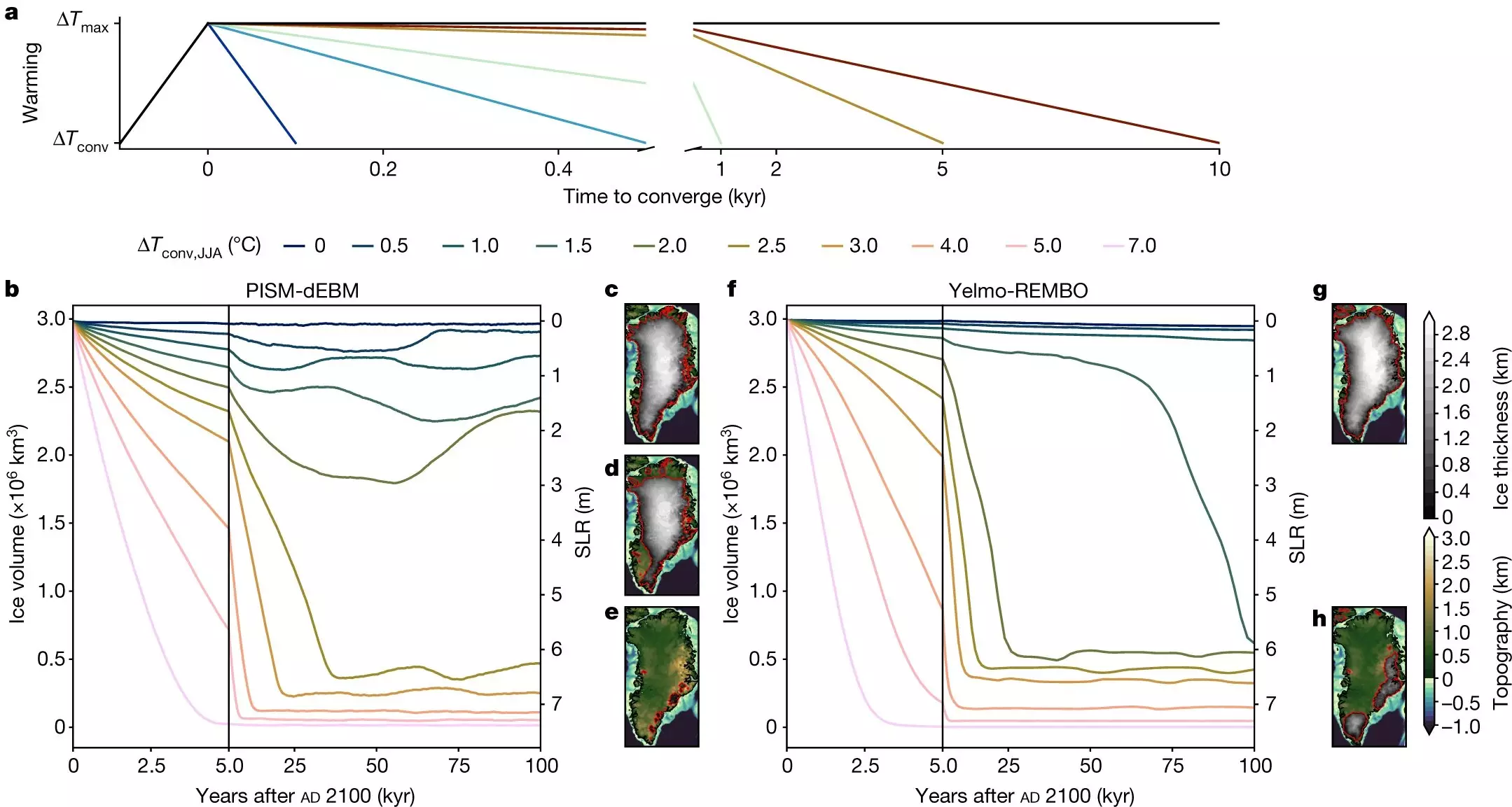Greenland is home to the second largest permanently ice-covered surface on Earth, with only Antarctica surpassing its size. Unfortunately, the Greenland ice sheet is under significant threat due to the effects of climate change. The complete melting of this ice sheet would result in a catastrophic rise in sea levels, endangering coastal regions worldwide and the people inhabiting them. Previously, it was believed that once a critical threshold of 1.7 to 2.3 degrees Celsius of global warming above preindustrial levels is crossed, the Greenland ice sheet would be lost forever. However, a team of international researchers, including Professor Niklas Boers from TUM and the Potsdam Institute for Climate Impact Research (PIK), has now demonstrated through a series of simulations that there may be a way back after surpassing the tipping point.
Reevaluating the Tipping Point
The simulations conducted by the research team reveal that it is possible to halt and even reverse the melting of the Greenland ice sheet, even in scenarios where climate goals are not met. This breakthrough discovery offers a glimmer of hope for the future. To validate their findings, the researchers employed two distinct ice sheet models to run a multitude of scenarios. These scenarios projected global warming ranging from 1.5 to 6.5 degrees Celsius until the year 2100, followed by a subsequent cooling phase lasting anywhere from 100 to 10,000 years. By utilizing supercomputers, they were able to analyze an extensive range of scenarios up to 100,000 years into the future, ensuring the balance of the Greenland ice sheet. Both ice sheet models demonstrated that recovery is possible if the critical temperature threshold is exceeded for a limited period of several centuries.
While the research team proposes the possibility of recovery, it is crucial to understand the urgency for corrective action. For the ice sheet to recover, temperature corrections must be implemented promptly within a timeframe of approximately 500 years. The severity and cost of countermeasures required to cool the Earth will escalate with the length of time the tipping point is surpassed and the temperature elevation during that period. Drastic measures such as significant reduction in atmospheric CO2 concentrations, wide-scale reforestation, and carbon capture and storage would be necessary. The simulations indicate that countermeasures may not need to be as extreme if global warming only slightly surpasses the targets set in the Paris Climate Accord.
The newfound possibility of recovery for the Greenland ice sheet should not be misconstrued as an excuse for complacency in climate protection efforts. It serves as a second chance and a glimpse of what the future could hold if we act swiftly. By acknowledging this second chance, we have the opportunity to reevaluate our priorities and intensify our commitment to sustainable practices. Halting climate change and ensuring the stability of the Greenland ice sheet before it’s too late remains our ultimate goal.
The Greenland ice sheet teeters on the brink of irreversible damage. However, a team of international researchers has illuminated a potential path towards recovery. Through extensive simulations, they have shown that surpassing the tipping point does not necessarily mean the end of the ice sheet. Implementing timely and drastic corrective measures could enable the Greenland ice sheet to recover over a period of several centuries. The significance of this discovery lies not in complacency but in its reflection of the urgency and hope encapsulated within our fight against climate change. As we navigate our way towards a more sustainable future, the Greenland ice sheet serves as a reminder of both the fragility and resilience of our planet’s ecosystems.



Leave a Reply